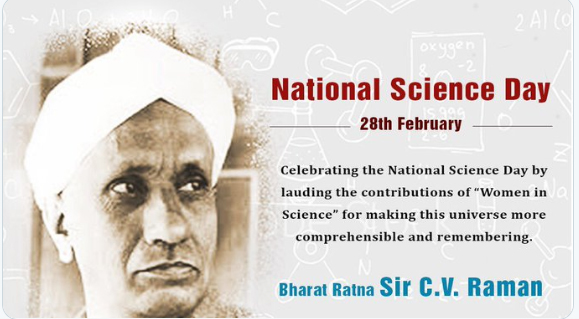India observes National Science Day on February 28 each year to commemorate Sir CV Raman’s discovery of the Raman Effect in 1928. The event highlights the significance of scientific advancements and aims to promote a spirit of innovation among young minds.
Theme for 2024: Empowering Youth for Global Leadership
This year’s theme, “Empowering Indian Youth for Global Leadership in Science and Innovation for Viksit Bharat,” underscores the vital role of young scientists in driving India’s progress in research and technology.
History and Significance of National Science Day
In 1986, the National Council for Science and Technology Communication (NCSTC) proposed that February 28 be recognized as National Science Day. The Government of India approved this recommendation, and since 1987, the day has been observed annually to honor CV Raman’s groundbreaking work and to foster a scientific mindset across the nation.
Who Was CV Raman?
Chandrasekhara Venkata Raman, born on November 7, 1888, in Tiruchirappalli, was a pioneering physicist whose contributions revolutionized the field of optics. His father, a lecturer in mathematics and physics, provided him with a strong academic foundation from an early age.
- In 1902, he enrolled at Presidency College, Madras, and graduated with a BA in Physics in 1904, securing the first rank and a gold medal.
- He completed his MA in 1907 with top honors and began his research in optics and acoustics.
- Despite limited opportunities for a scientific career in India at the time, he joined the Indian Finance Department in 1907 but continued research at the Indian Association for the Cultivation of Science, Calcutta.
- In 1917, he became the first Palit Professor of Physics at Calcutta University.
- Later, he served at the Indian Institute of Science, Bangalore (1933-1948) and went on to establish the Raman Research Institute in 1948, funding it himself.
His Groundbreaking Achievements
- In 1926, he founded the Indian Journal of Physics and served as its editor.
- He played a pivotal role in establishing the Indian Academy of Sciences and became its first president.
- In 1930, he was awarded the Nobel Prize in Physics for his discovery of the Raman Effect, making him the first Indian scientist to receive the prestigious honor.
- In 1954, he was conferred the Bharat Ratna, India’s highest civilian award.
Legacy and Passing
Sir CV Raman dedicated his life to scientific research and innovation. He passed away on November 21, 1970, at the age of 82, leaving behind an enduring legacy that continues to inspire generations of scientists.
National Science Day serves as a tribute to his contributions and a reminder of the power of scientific curiosity in shaping India’s future.




